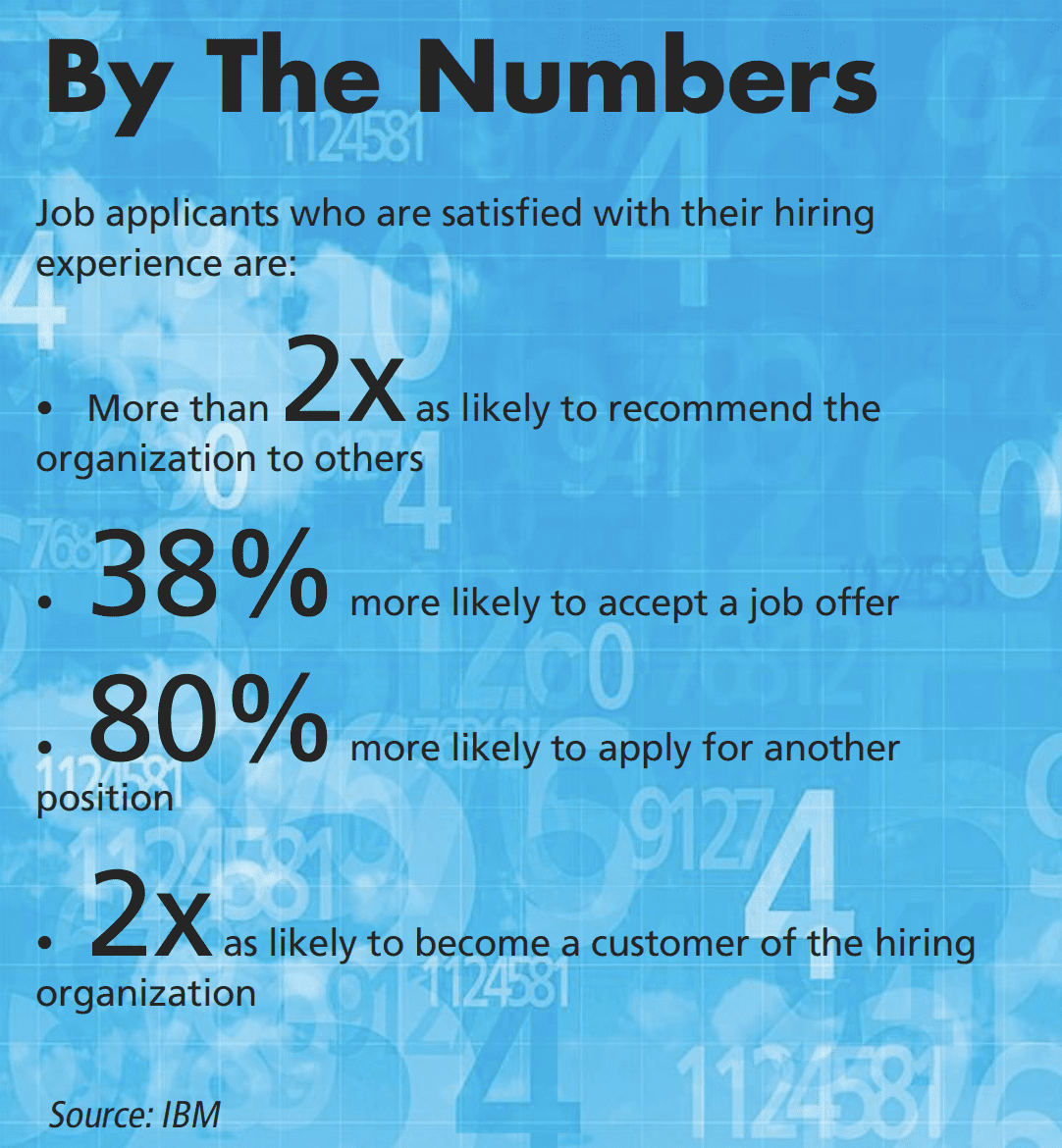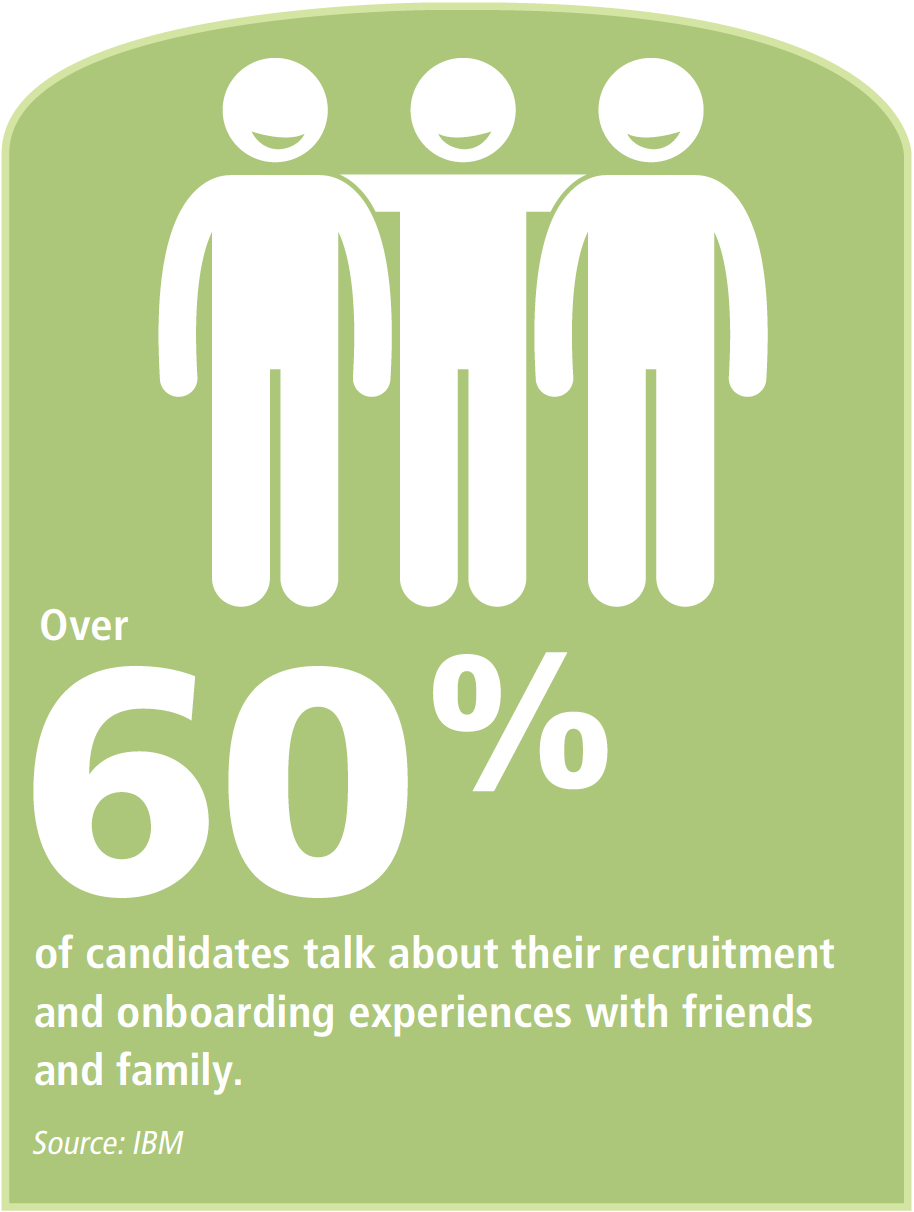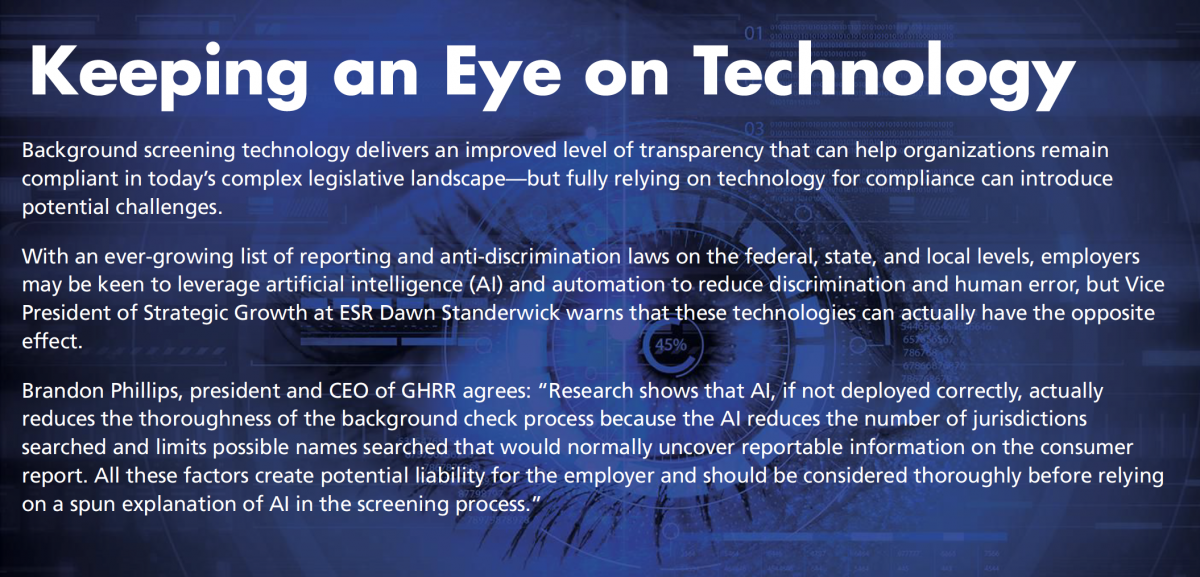Screening tech innovations are improving speed, trust, transparency, and ultimately, the candidate experience.
By Marta Chmielowicz
With record numbers of millennials and Generation Z job candidates entering the workforce, employers are reconsidering their long-held hiring practices in order to attract and retain best-fit talent. Candidate experience is now one of the hottest topics in hiring, with organizations striving to illustrate their brand from their very first interactions with potential candidates. In fact, the State of Employer Branding survey by Jibe indicates that 95 percent of HR professionals feel that their brand is impacted by candidate experience.
In this environment, background screening is emerging as a key touchpoint that can allow an organization to showcase its employment brand while executing proper vetting and due diligence. By providing efficiency with a human touch, employers that leverage a robust and technology-enabled employee screening process can impress top talent and differentiate themselves among the competition.
“Candidates in this current low unemployment job market are looking for a company that makes them feel special during the hiring and onboarding process,” says Connie Clore, chief strategy officer at Asurint. “That includes the background screen. They want the process to be accurate, fast, interactive, and seamless. After the employer’s work is complete with finding the right candidate, that means providing concierge, white-glove service with real-time updates.”
The Value of Experience
IBM’s The Far-reaching Impact of Candidate Experience study confirms the importance of a positive candidate experience throughout the hiring process:
- Job applicants who are satisfied with their hiring experience are more than twice as likely to recommend the organization to others, compared to those who are not satisfied (62 percent versus 28 percent).
- People who are satisfied with their candidate experience are 38 percent more likely to accept a job offer.
- Applicants who do not receive a job offer are 80 percent more likely to apply for another position if they have a positive experience.
- Candidates who are satisfied with their experience are twice as likely to become a customer of the hiring organization than those who are not satisfied (53 percent versus 25 percent).
According to Clore, the background screening process is a direct reflection of a company’s brand, so organizations need to carefully consider how their screening strategy integrates with the broader hiring experience and organizational culture.

But while employee screening provides a valuable opportunity to make a good impression, failing to deliver a positive experience at this stage can reflect poorly on an employer and result in the loss of significant time and money.
“In today’s tight labor market, candidates have choices. If a background check takes too long or is rife with errors, they’re going to become frustrated and might move on to another opportunity. A difficult background check process could lead to an organization losing out on qualified talent, tainting a candidate’s feelings toward a brand even if they get the position and become employed,” says Tammy Cohen, founder and chief visionary officer at Infomart.
This dissatisfaction could have far-reaching consequences. According to IBM’s research, today’s candidates are likely to broadcast their experience publicly, with more than 60 percent of candidates reporting that they talk about their recruitment and onboarding experiences with friends and family.
And with the prevalence of social media, Clore says that job applicants are more likely to share their dissatisfaction online than ever before. “This is why the time it takes to complete a screen is so critical, as a quick completion of the screen does not allow the candidate time to become dissatisfied,” she adds.
Meeting Expectations
So, what are the key capabilities that today’s job candidates expect in a screening process? According to Cohen, speed, trust, and transparency are paramount. “Today’s job applicants want to get to work quickly, to trust that their background check will be completed accurately, and to have transparent insight into the process if they dispute their results.”

“Job searchers expect ease of use on no more than two platforms when applying for a job,” explains CEO of MBI Worldwide Brian Chapman. “They are putting out their resumes in rapid succession among many companies and job boards. They expect easy input platforms to submit their information via tablets, phones, and worst-case scenario, desktops.”
Chapman says that some of the common features that job seekers look for in today’s background screening platforms include:
- seamless transitions between an employer’s various recruitment platforms;
- easy to navigate and mobile-friendly pages;
- e-signatures that allow the use of a finger or stylus for document authorization; and
- an easy upload process of any required documents via tablets and phones.
By ensuring that background check platforms are integrated into applicant tracking systems (ATSs), employers can prevent drop-off resulting from a long application process. And with 94.2 percent of millennials using smartphones, according to the Pew Research Center, adopting mobile capabilities can further improve ease of access and time to hire.
“It’s critical that any platform is mobile-friendly and extends an easy to understand and navigate process that is optimized to today’s standards. Text messaging notifications are a recent demand of the market,” says Dawn Standerwick, vice president of strategic growth at Employee Screening Resources (ESR).
Mobile, biometric identity verification is another technology currently being deployed in the screening space, Cohen says. This approach enables candidates across the globe to initiate a background check and verify their identity in 60 seconds or less, using only a cell phone and a government-issued ID. These types of technologies enable a quicker onboarding process and greatly improve candidate experience.
2. Trust. As the world becomes more mobile, connected, and dependent on the internet to store and access sensitive information, privacy concerns are becoming a top-of-mind priority across the board. “There is currently a significant concern around security, privacy, and confidentiality in light of recent data breaches and legislation like the EU General Data Protection Regulation (GDPR),” says Standerwick.
Gallup reports that two-thirds of U.S. adults worry about becoming victims of cybercrimes such as a data breach, with 67 percent worrying at least occasionally about computer hackers stealing their personal information and 66 percent worrying at least occasionally about identity theft. And the fears are not unfounded: One in four Americans report that they or a member of their household had personal information stolen by hackers in the last 12 months.
Screening technology can quell some of these fears by giving applicants a greater level of transparency and control over the information that they share. “Today’s applicants have more data privacy concerns than they did 10 or 20 years ago,” Cohen of Infomart says. “New technology can allow them to take the helm over aspects of the process, such as their identity verification. Automated updates can also tell applicants what parts of the process have been completed so that they’re not left waiting in the dark.”
3. Transparency. Instead of relying on recruiters for status updates, employee screening portals now give candidates permission to check on the status of reports and access documents, improving efficiency while enabling a streamlined candidate experience.
“Some technology platforms will allow candidates to see an overview of their progress through the process and this added bit of insight seems to help significantly,” says GHRR’s Phillips. “For example, knowing that the HR professional is just waiting on your university to verify your undergraduate degree might give candidates patience to wait another day on this organization as offers continue coming in. Additionally, a responsive platform which reacts to the data entered and actions taken by the candidate to inform them of the next step will provide further clarity to the candidate’s understanding of the process.”
According to Chapman, these technologies also improve the screening process by allowing candidates to dispute background check findings while the report is in progress rather than forcing them to wait for an adverse action letter. This levels the playing field for applicants and allows for more accurate reporting that fully embraces compliance with Fair Credit Reporting Act (FCRA) and Equal Employment Opportunity Commission (EEOC) laws.
Standerwick explains that screening technologies contain many capabilities that can ease the burden of compliance, including:
- a dynamic notice, disclosure, and consent process;
- pre-population of already submitted information through an ATS or other HR technology;
- automated delivery of required copies of the background check report;
- the ability to automate pre- and post-adverse action notices;
- a clear path for disputing any component of the background check; and
- delivery of individualized assessments when a candidate is disqualified due to a criminal history.
But even though technology can provide a hiring advantage by delivering a positive candidate experience and a transparent, compliant, and efficient screening process, organizations still need to prioritize a humanized approach.
“Technology is a must-have, but employers can’t forget that the human connection is just as valuable in the overall process. At the end of the day, HR recruiters should not abandon that concierge, white-glove treatment which can cement their brand in the candidate’s mind,” Asurint’s Clore says.















